Tinghir is about 10 times (not an exaggeration) bigger than either of us expected. I don't even remember the last time we were that far off. Tinghir is only known to us for the Todra gorge that is 15km north. While Todra has high walls, it is rather short. The hike in the surrendering areas was particularly interesting, coming from the verdant south of the US.
We had a collective taxi ride on the way up. On the way back, we hitched a ride with a local man showing his friend around who is visiting from Casablanca. We came to find out that he works in the nearby silver mine as a technician. Then everything clicked. Our guidebook had referred to Tinghir as a dusty mining town. It turns out the mine is the largest in Africa and 7th in the world. Therefore the town is 10 times bigger than we expected of a desert town and our sfenj (bunuelo) vendor has to work as fast as he can.
The second day we had a short walk in the oasis of olive trees and date palms. In the fields, people are cutting alfalfa (alfalsa in Arabic). At my level of Arabic reading (just about nil), it seems there are more words that start with "al" than not. The alfalfa is then bagged and carried by donkey or human to feed the cows and/or goats that I imagine are hanging out in some shady spot. In my ongoing quandary of what to be in my next life, those cows seem to have a good life from my point view of a fan of leafy greens. The pleasant temperature and clear water running in the irrigation ditches make the place seem idyllic.
Do they ever have a water shortage here?! At 1400m, Tinghir gets more water from the Atlas melt than places in the lower altitudes. The groundwater level is going down, not enough rain. The worrywart me is concerned what happens when they run down the groundwater. Maybe by then, they will be developed enough that they will be moving water around as they must do California and Arizona!
Traveler's Tip: We stayed at Hotel Tomboctou and recommend it: easygoing+capable management, outstanding buffet breakfast, free amazingly accurate hand-drawn map of Tinghir and sights.
The desert with Atlas Mountains in the background as seen from the bus from Ouarzazate to Tinghir.


Olive grove (from the bus).

First order of business in Tinghir accomplished: find a sfenj vendor.

A small square at the edge of the medina.

Tinghir Post Office.

We buy some oranges.

View from the hotel rooftop terrace.

The next shots are from our excursion to Todra Gorge (and above) where we hiked 14 kms with about 450 meters elevation gain (and then loss)....In the shared taxi to the Gorge.

The narrow part of The Gorge is only several hundred meters long.

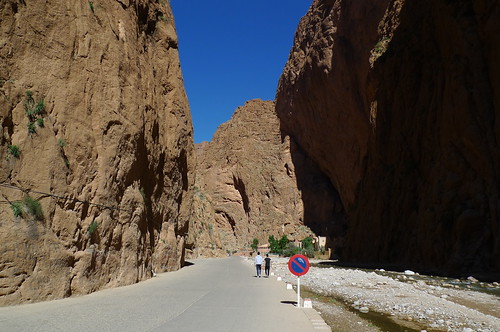
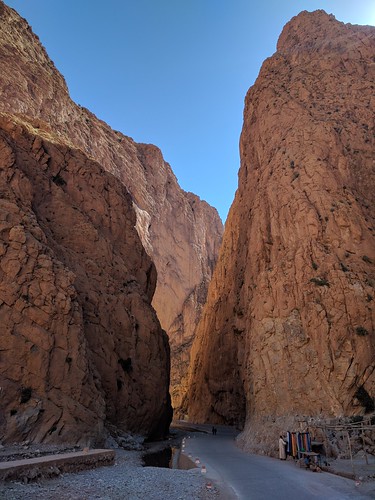
We kept walking for another 2 kms or so where the gorge widens and there are some small farming plots; mostly alfalfa (an Arabic word we borrowed into English via its Spanish cognate).
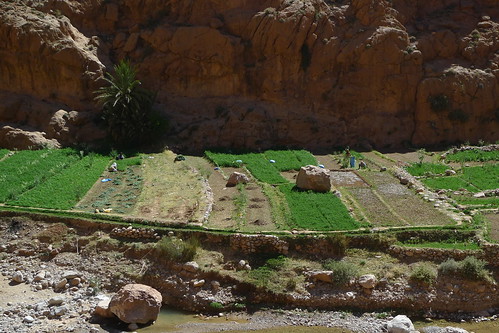
And rock climbers (tourists for sure).


Then we headed up, up up, following a well used mule track, above the western edge of the Gorge to a Berber camp, then back down.





Looking back to the road below where we walked earlier.
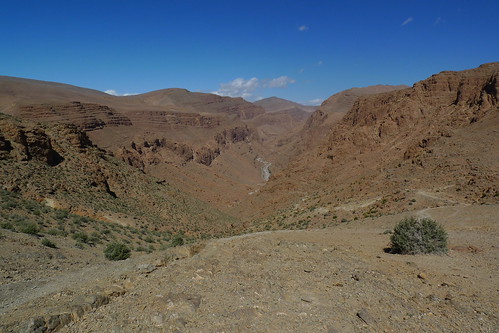

The Berber Camp, tent at left. A gouple of small children ran out of the tent and asked us for money.

On our way down the other side, we caught a glimpse of Tinghir.



Taking a break.



Almost down.

And after crossing the river, we are done and catch a ride back to town...


...and it's time for sfenj. ;-)

Day Two: We start with a walk through the Medina. No souvenir vendors here, just regular merchants.


Then walk through the oasis to the old town of Afanour.


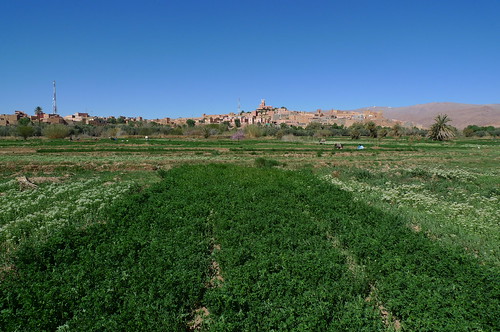

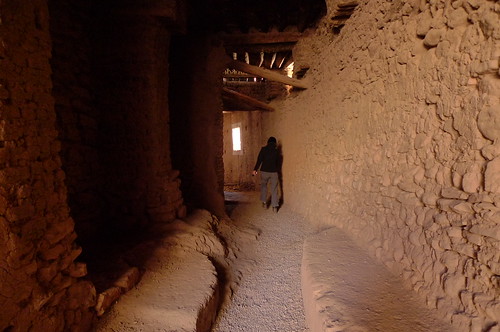


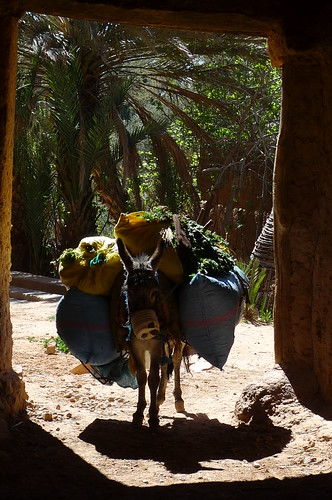

And finally to the oasis overlook where tourist buses stop.






No comments:
Post a Comment